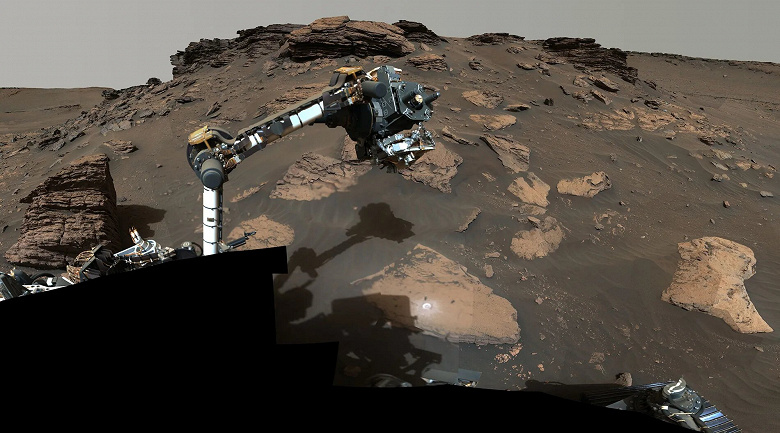An open lid creates an obstacle to data collection
Engineers are working to stabilize the dust cover on one of the Perseverance rover's cameras. After analyzing data and images obtained from the rover, it turned out that one of the two covers that prevent dust from accumulating on the optics of the SHERLOC instrument does not close completely. This lid position has a negative impact on scientific data collection.
The SHERLOC instrument, which is mounted on the robotic arm of the Perseverance rover, is a system for scanning the environment on Mars. It uses Raman scattering and the luminescence of chemicals to search for organic compounds and minerals that may be signs of past life. SHERLOCK is equipped with cameras, a spectrometer and a laser to help conduct scientific research on Mars.
The problem with the cover was discovered on January 6, when it was determined that it was in a position that prevented certain functions of the appliance from working properly. A team of engineers conducted an investigation to find out the cause of the problem and propose possible solutions. This partially opened the lid, allowing the team to better study the behavior of the lid motor.
In the current position of the lid, the device is unable to use the laser module on stone objects and is also unable to carry out spectroscopic measurements. However, with the help of the SHERLOC color camera — WATSON, it is still possible to obtain images of rock surfaces and their textures.
SHERLOC — one of seven instruments on the Perseverance rover that were designed to ensure that the mission's science goals could be achieved even if one of the instruments failed. Besides SHERLOC, spectroscopic studies are also carried out using two other instruments — PIXL (Planetary Instrument for X-ray Lithochemistry) and SuperCam.
Currently, the Perseverance rover continues its exploration in the Beehive Geyser region. It marked its 1000th Martian day (sol) on the Red Planet on December 12, 2023, more than 300 sol after its successful landing in February 2021. During this period, SHERLOC scanned and provided detailed data on 34 lithic objects, producing a total of 261 hyperspectral maps.
Perseverance rover — The successor to the Curiosity rover, it is equipped with a radioisotope power system. Curiosity continues to operate successfully on Mars for over 11 years (over 4,000 sol), and Perseverance was able to inherit proven design and functionality.

